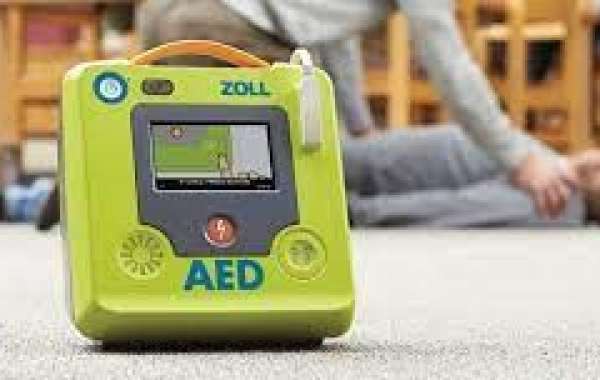Automated External Defibrillators (AEDs) are life-saving devices crucial in the event of sudden cardiac arrest (SCA). Purchasing a refurbished AED can be a cost-effective solution for many organizations and individuals. However, there are several factors to consider to ensure you are getting a reliable and effective device. This guide will explore the essential aspects to keep in mind when purchasing a refurbished AED defibrillator.
1. Certification and Standards
Regulatory Compliance
Ensure the refurbished AED complies with local and international regulatory standards. In the United States, this means FDA approval. Compliance with these standards guarantees that the AED has been refurbished to meet specific safety and performance criteria.
Certification from a Reputable Refurbisher
Purchase from a reputable refurbisher who provides certification of the AED’s condition. This certification should indicate that the AED has undergone thorough testing and meets manufacturer specifications.
2. Warranty and Return Policy
Warranty Coverage
Check the warranty offered on the refurbished AED Defibrillators. A good refurbisher will offer a warranty similar to that of a new device. This typically ranges from one to three years, covering parts and labour.
Return Policy
Understand the return policy in case the AED does not meet your expectations or has issues. A flexible return policy indicates confidence in the product's quality.
3. Battery and Electrode Pad Condition
Battery Life
AED batteries have a limited lifespan, typically around 4-5 years. Ensure the refurbished AED Defibrillators come with a new or nearly new battery. Knowing the battery's remaining life is crucial as replacing it can be costly.
Electrode Pads
Electrode pads also have an expiration date, usually 1-2 years. Verify that the AED includes new pads or that the pads are not near their expiration date.
4. Device History and Age
Previous Usage
Inquire about the device’s history, including its age and previous usage. An AED with minimal use is preferable. A device used frequently in a professional setting may have more wear and tear.
Software Updates
Ensure the AED has the latest software updates. AED technology evolves, and newer software versions can enhance the device's performance and reliability.
5. Performance and Testing
Performance Testing
The refurbisher should conduct comprehensive performance testing, including checks for functionality, self-diagnostics, and shock delivery capabilities. Request documentation of these tests.
Calibration
Ensure the AED has been properly calibrated to deliver the correct shock dosage. Proper calibration is vital for the AED to function effectively during an emergency.
6. Training and Support
User Training
Determine if the refurbisher offers user training. Proper training ensures that users can operate the AED effectively during an emergency. Some refurbishers provide online resources, training manuals, or in-person training sessions.
Customer Support
Check the level of customer support available. Reliable refurbishers offer ongoing support for troubleshooting and maintenance.
7. Accessories and Add-Ons
Carrying Case and Rescue Kit
A complete AED package often includes a carrying case and a rescue kit containing items like scissors, a razor, and a CPR mask. Ensure these accessories are included with your purchase.
Additional Pads and Batteries
Consider purchasing additional electrode pads and a backup battery. Having spares ensures the AED is always ready for use.
8. Price and Financing
Cost Comparison
Compare the price of refurbished AEDs from different suppliers. Ensure that the cost includes all necessary components and accessories.
Financing Options
Some suppliers offer financing options. If the upfront cost is a concern, inquire about payment plans or leasing options.
9. Reputation of the Supplier
Customer Reviews
Read customer reviews and testimonials. Feedback from other buyers can provide insights into the reliability and quality of the refurbished AEDs offered by the supplier.
Accreditation and Certification
Choose suppliers accredited by recognized organizations. Accreditation is a sign of adherence to high standards in refurbishment processes.
10. Compatibility and Future-Proofing
Compatibility with Existing Equipment
If you already have AEDs, ensure the refurbished unit is compatible with your existing accessories and maintenance routines.
Future-Proofing
Consider the future availability of parts and accessories for the AED model you are purchasing. Opting for a model that is still in production can ensure easier maintenance and part replacements.
Conclusion
Purchasing a refurbished AED defibrillator can be a wise decision, offering significant cost savings without compromising on safety and performance. By considering factors such as certification, warranty, device history, and supplier reputation, you can ensure that you are investing in a reliable life-saving device. Always prioritise quality and support to maximise the effectiveness of your AED in emergency situations.
Read more https://onetable.world/



